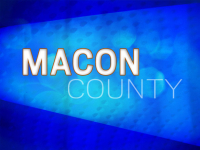Task force aims to fix future traffic snarls
A Jackson County task force has entered the nitty-gritty stage in its quest to fix traffic congestion on N.C. 107 in Sylva.
The group has begun compiling a long list of possible solutions to the congestion. Once complete, it will turn the list over to the Department of Transportation to assess whether and how much each idea could help.
The solutions fall into one of two categories. One is to alter the design of N.C. 107 to handle more traffic. The other is to divert cars off N.C. 107.
Jackson County is split into two basic camps of how to solve traffic congestion on N.C. 107. One advocates building the Southern Loop, a cross-county highway that would bypass the main drag of N.C. 107 and tie in with U.S. 23-74 north of Sylva. Initially conceived as a large-scale freeway, road planners now say it could be a boulevard or even simple two-lane road.
The second camp wants to redesign the existing N.C. 107 and use smaller side roads to handle some of 107’s traffic.
Just how much congestion the task force is tasked with solving has been the subject of debate over the last several months (see related article.) The latest prediction claims there will be around 1,000 to 2,000 cars too many using N.C. 107 during the peak commuter hours by the year 2035.
Related Items
The projection was formulated using DOT models and growth formulas, and massaged with help of the task force.
Some members of the task force remain concerned over the growth assumptions plugged into the model. The pace of growth witnessed over the past 25 years may not hold true for the next 25.
“Then this overage you are trying to address may not be accurate,” said task force member Susan Leveille.
Those in favor of the Southern Loop want to make the future congestion look worse to justify the road, Leveille said. Likewise, those who don’t want to build the Southern Loop want to downplay future congestion.
Diverting traffic
The name of the game is figuring out how to deal with 1,000 to 2,000 more cars than the road can handle. That’s where the brainstorming process and solutions pitched by the task force come in.
Those opposed to the Southern Loop hope to shows the overage can be handled without building a new highway. Those in favor of the Southern Loop claim the only way of dealing with that many cars would be building the new bypass.
The Southern Loop isn’t the only way to divert cars off 107, however. There are other ways to lighten the load. One is a system of smaller network roads: a system of shortcuts, more or less.
Another option for lightening the load doesn’t involve the roads at all. For example, if more students and faculty lived in Cullowhee, they wouldn’t be driving up and down N.C. 107 to get to campus. The county could enact land-use strategies to encourage more residential development around Western, according to Pam Cook, a DOT transportation planner working with the task force.
“That would be something that only elected officials can change, but that can certainly be evaluated,” she said.
Another option to get cars off the road is a commuter bus between Sylva and Western Carolina University in hopes of decreasing cars on the road.
When it comes to altering the design of N.C. 107 to handle the traffic overage, solutions being pitched include rerouting intersections, adding lanes and congestion management strategies.
Some solutions, when packaged together, can actually result in exponential improvements. For example, an intersection redesign could increase carrying capacity by 2,000 cars and an extra lane by another 2,000, but when done together could carry an extra 5,000.
“We’ll try to strategically group those,” said Ryan Sherby, community transportation coordinator for 10 western counties.
A whole category of solutions falls under the umbrella of congestion management. Congestion management can streamline traffic and increase what the DOT calls the “carrying capacity” of the road. But the congestion strategies might not be included in the numbers game aimed at coping with the projected overage, Cook said.
But the techniques are being considered. A team that specializes in congestion management visited Jackson County and performed a cursory analysis of N.C. 107 last year at the behest of the local DOT. The report from their visit is not yet out, but could be promising, Cook said.
“They may not solve all the deficiencies but would certainly make things operate more smoothly,” Cook said.
Cook said the team would like to make a second visit to examine a few options more closely.
The public can join in the brainstorming as well. Anyone with a solution they think the task force should put on the list to run by DOT can contact Sherby at This email address is being protected from spambots. You need JavaScript enabled to view it. or 828.586.1962, ext. 214.
Stop-and-start process now rolling
Jackson County task force members are excited with the new stage of their work. The task force was formed six years, but faltered for much of its existence due to a revolving door of DOT staffers, including long windows with no staff person assigned to the task force at all.
“I feel like we are just getting started with what I thought would be happening five years ago,” said Susan Leveille, a task force member and representative of the Smart Roads coalition. “We have been sitting listening for such a long time, and for a long time we had a void of nothing. I am very glad that we finally have an opportunity for input that seems to be genuinely part of the process.”
The current DOT staffer assigned to the task force marks the fourth since its creation, and each one essentially started again from scratch upon taking over. But the latest at the helm, Pam Cook, appears to be in for the long haul and the task force is finally showing concrete progress.
Cook said every solution pitched in the brainstorming stage will get evaluated.
“Every thought needs to be considered. Some can just be considered by discussion, some thoughts will be evaluated through a model, others we’ll have to go out into the field and see if it is feasibly possible to connect this road and that,” said Cook, who specializes in community transportation planning. “There is not a bad idea.”









